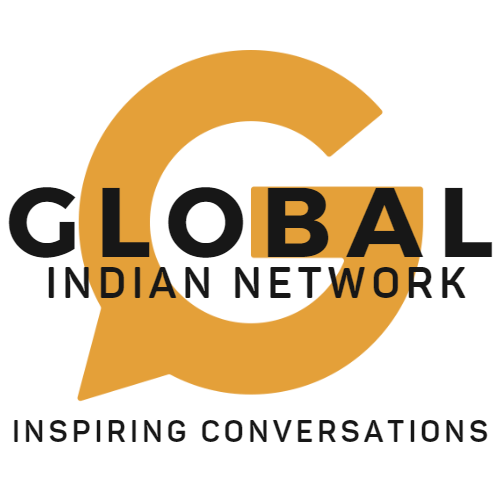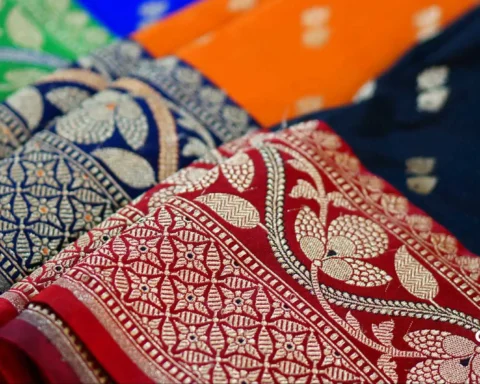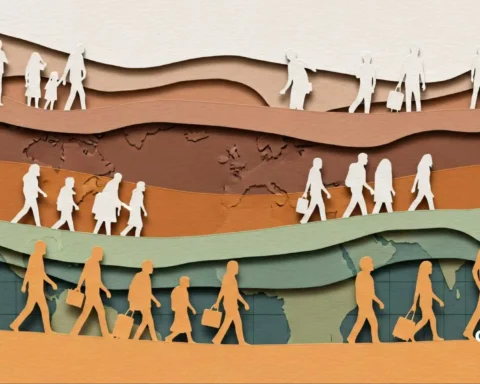Two years ago, on a tense autumn evening in Leicester, the clatter of rival groups was heard spilling over the narrow British streets. What started as a victory of an India-Pakistan cricket match evolved into a street confrontation between the young Hindu and Muslim men. Streetlights showed broken glass, and shutters fell on shops, and community leaders pleaded. Police cars were moving around answering a question that has since covered thousands of miles: Is the domestic politics of India taking its religious separations out to foreign shores?
In cities such as Leicester in the UK, Edison in New Jersey, and Brampton in Canada, communities that were once held together in their nostalgia towards their homeland are finding divisions being drawn along the same ideological lines that dominated the headlines in India. Hindutva, or Hindu nationalism, is at the core of this change, as it is a cultural nationalism combined with a political assault. It is an identity for a large number of the Indian diaspora. However, to others, it is starting to appear like a wall of separation.
The Roots of Imported Polarisation
Hindutva was a movement that was nurtured in India, yet the thoughts have spread well beyond India. The communities of Indian origin in foreign countries are being dragged into these cultural wars in the country through temple organizations, social media groups, and diaspora political events. Message posts on WhatsApp and Facebook encourage Hindu solidarity and allege a perceived Muslim threat. Messages that previously were limited to domestic politics now flow through international online communities.
According to sociologists who observe these communities, the boundary separating cultural affiliation and ideological exporting is becoming permeable. The festivals that were once held as a representation of unity among people, such as Ganesh Chaturthi, Navratri, and Eid, have in certain neighborhoods become silent or controversial, painting an image of suspicion towards one another.

Leicester: When Tensions Boiled Over
Leicester, being a city of colorful South Asian cultures, became an epicenter in 2022. What began as an expression of the victory of Indian cricket in the country took a turn into a violent clash between Hindu and Muslim young people. The inhabitants remember masked men, tearing flags, and terrified neighbors peering out of their windows. It was as though a bit of Indian war had come here, said one of the local shopkeepers, shaking his head.
Elders of the community and religious leaders subsequently met in the succeeding days, calling for peace. But the ideologies driven by imported ideologies raised fault lines long suppressed, beneath the appeals, exhaustion, and declarations of reality. The case of Leicester continues to be used as a warning example by local police of what can happen due to digital propaganda inciting urban violence.
Echoes Across the Ocean
The symptoms in North America are less pronounced, but no less alarming. The cultural events of Hindu nationalist organizations in the suburbs of New Jersey and California have been criticized for turning into political rallies. Hindu students have claimed that they are pressured in Canada to follow nationalistic causes, and Muslim and Sikh groups have claimed that they are feeling increasingly unfriendly on the internet.
These communities are multicultural, successful, and diverse at first sight. However, there is a sense of uneasy undertones to the discussions, as neighborhood groups are talking of us and them, and even long-time friendships are stained with suspicion. One of the professors of the University of Toronto who studies diaspora politics refers to it as a silent import of polarization.

The Role of Digital Platforms
Social media has reached a point where Hindutva ideology has spread more than any other traditional organization can. Influencers and YouTube channels across the globe undergo a Hindu renaissance, and some propagate divisive messages in the guise of cultural pride. What happened in a temple in California and a protest in London will now tend to be signaled by a smartphone notification, a shared video, a tweet, or a digital whisper that provokes a real-world response.
The young diaspora, a significant number of whom are not born in India, are between the worlds: socialised in multicultural values and ideals, they are sucked into an emotionally infused debate over identity and loyalty. To one, Hindutva is a return to pride; to another, Hindutva is an inheritance of resentment.
A Question of Belonging
In cities that are constructed on diversity, these demarcations run deep. Older immigrants who came decades ago do not miss the irony because they came in with hopes of unity. In New York, one of the leaders of its Indian-origin community said: We have come to avoid the political tension and not recreate it, and then looked around a thronging cultural fair split into competing organizations.
Even governments are starting to pay attention. In the Leicester violence, British officials have examined community initiatives, and American policymakers fear ethnic differences in politics at the local level. The question, authorities assert, is a fine line, which is to celebrate cultural expression, without letting in imported strife.

The Human Cost and the Uncertain Future
At the very fabric of it, this is not simply a political phenomenon; it is human. Before dinner, the family members murmur threats. Friends pass each other’s posts out of embarrassment. What was one combined visit to the temples and mosques has become two different meetings.
But through such fissures, reconciliation still rings. Community dialogues on faith leaders across several religions have been initiated in Leicester and New Jersey, which reminds people that the real power of the diaspora is not in reproducing India but in overcoming it.
The question now remains: will Indian-origin communities overseas enable domestic politics to shape their collective narrative, or will they rewrite their history as agents of unity in a world that is growing more and more divided?









